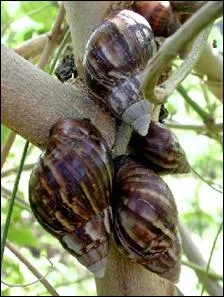
Snail is one edible that I tried as much as I could to avoid while I was still growing up. I remember back then, mom would spend some time, trying to convince me that snail dish was delicious but when I recall how slow that creature moves and some other things about it, I would rather be restraining myself not to puke than eat it.
Fast forward to today, snail dish has suddenly become my favourite. There is hardly a week that passes these days without me having good amount of snail in my meal.
My new likeness for this food has nudged me into trying to know more about how useful it can be to the human body. Here is what I found:
Snails, especially the achatina fulica, popularly called giant African land snail, is highly medicinal. A lot have been said already about how this particular specie of snail destroy crops which has made most of us view it in bad light – dangerous pests that destroy crops. Unfortunately, the bearers of this news are always unfairly silent about the good things that can equally come from snail.

An average snail is made up of about 80% water, 15% protein and 2.4% fat. They also contain essential fatty acids, iron, calcium, selenium, magnesium and are very good source of vitamins E, A, K and B12.
What do I say about the slime? The benefits of snail slime have been proven over and over again. They were recognised in ancient Greece by some Hippocrates who made use of it to heal skin diseases and ulcers and to reduce scarring.
More recently, the potency of this slime was acknowledged by a group of farmers, using Chilean snails. The farmers were able to highlight the benefits when they noticed cuts on their hands healed almost immediately and their skin became softer. It is so because the slime contains allantoin, antibiotics, glycolic acid, collagen and elastin, and so it heals and regenerates skin cells minimising scars.
Now you know!